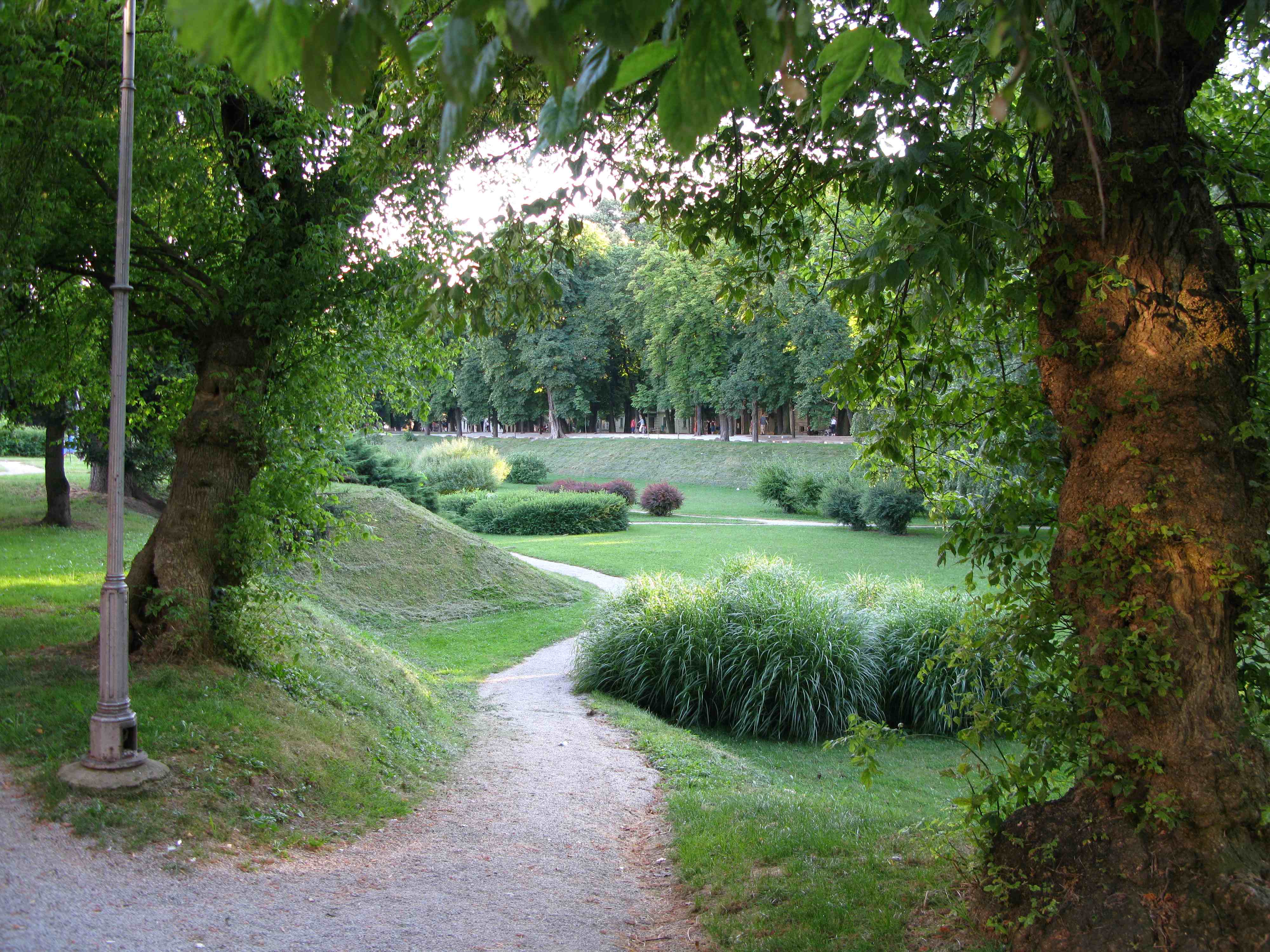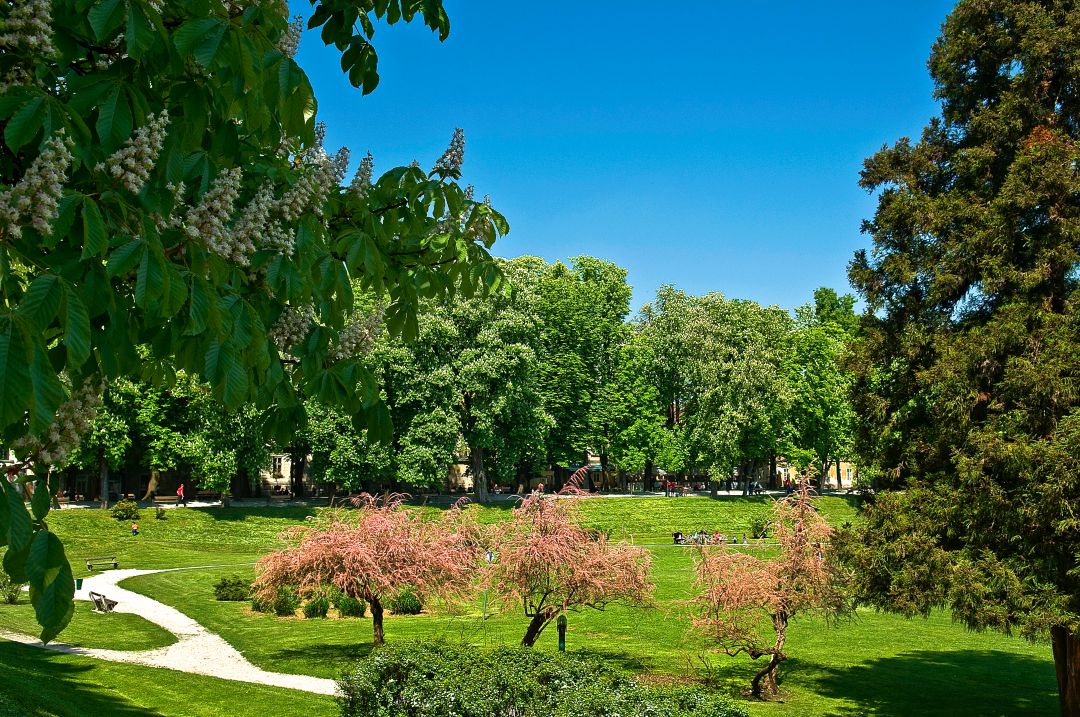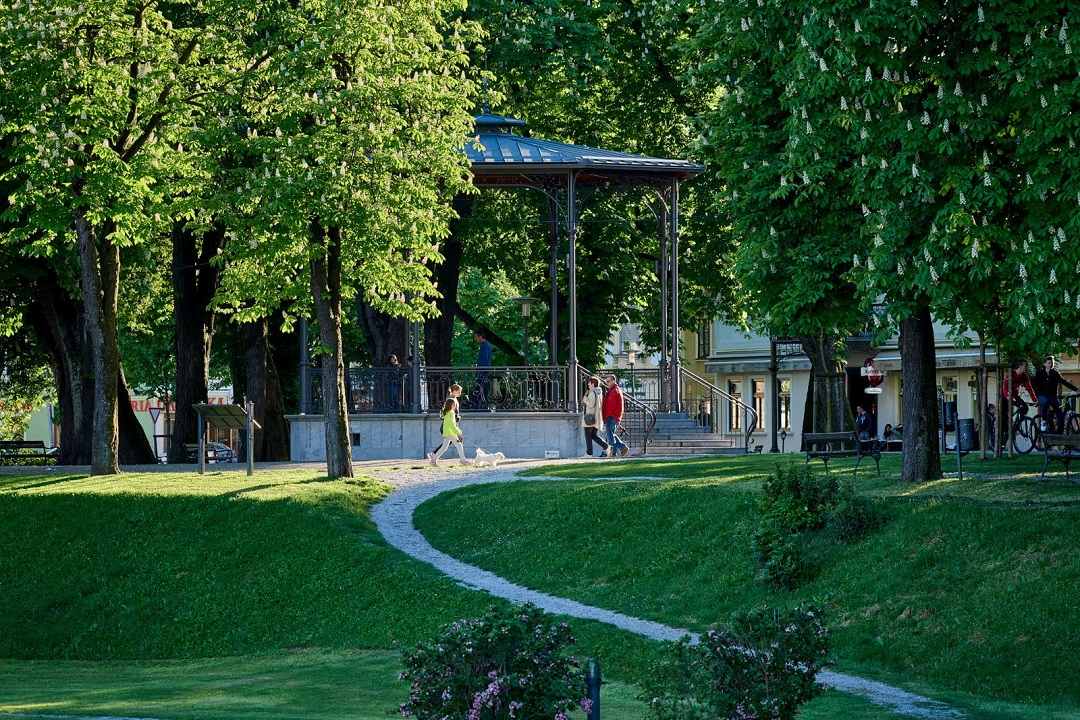More than 100,000 Seedlings Planted across Dalmatia in Boranka Campaign
ZAGREB, 23 Oct, 2021 - This year's sixth reforestation action in the areas of the coastal region of Dalmatia consumed by wildfires took place on Saturday in Donje Sitno, in the area of the coastal city of Split, with around 200 volunteers, including Canadian Ambassador Alan Bowman, participating.
In the three years of the reforestation project, called Boranka, more than 100,000 saplings have been planted.
Ambassador Bowman told reporters that this was the third time he was participating in the campaign since taking office in Croatia.
He stressed that in Canada tree-planting was very important as trees were one of the possible solutions to climate change.
Trees absorb carbon, which is good for the environment and Canada has always supported such projects, he said, noting that he was very proud wildfires in Dalmatia are put out with the help of aircraft made in Canada.
The business director of the Croatian Scouts Association, Dan Špicer, who launched the reforestation project, said that on Saturday several thousand seedlings would be planted.
Since 2018, when the Boranka project was launched, more than 8,000 volunteers have participated in reforestation drives and more than 100,000 seedlings have been planted on an area of more than 50 hectares, he said.
Špricer noted that in addition to reforestation, the association also organises watering in summer time.
The organisers of the Boranka project are the Croatian Scouts Association, the Hrvatske Šume forest management company, the Croatian Mountain Rescue Service and the Split Scouts Association.
This is the last reforestation action this year and the 29th since the launching of the project.
Boranka, the biggest European volunteer campaign designed to reforest areas consumed by wildfires, originally started in Split but in the meantime it has spread to other cities in Dalmatia.
It is sponsored, among others, by the European Parliament, the Ministry of Agriculture, the American Chamber of Commerce, the Canadian Embassy, and the German-Croatian Chamber of Industry and Commerce.
For more on lifestyle, follow TCN's dedicated page.
For more about Croatia, CLICK HERE.
Drones Plant Self-Germinating Tree Seed Packets in Grubisno Polje
September the 28th, 2021 - World Ozone Day is celebrated on September the 16th every year, and something very interesting took place in Croatia when a large action involving the afforestation of Grubisno Polje happened with the help of a drone.
As Poslovni Dnevnik/Lucija Spiljak writes, what took place at Grubisno Polje is the Croatian O2 Project, the first afforestation campaign in Croatia to be carried out in this brand new and modern way using the product Seed Bombs, which are self-germinating packets of tree seeds.
The founders of the Croatian O2 project, Dusan Jelic and Goran Ladisic jointly devised natural and ecological solutions for growing young shoots and afforestation, which will reduce excessive emissions of carbon dioxide (CO2) responsible for climate change. They explained in more detail what exactly the Seed Bombs product represents.
“In Seed Bombs, in addition to the primary seed of the trees, there are also seeds of accompanying plant species. It isn't enough to simply plant a certain number of large trees for successful afforestation. Such a principle leads to the development of the culture of that type of tree alone, and not the development of a healthy forest habitat (a healthy ecosystem).
Furthermore, a large amount of CO2 is absorbed not only by trees but also by other parts of a healthy ecosystem (soil, grass, shrubs). Therefore, we define the afforestation's success according to the number of m2 of the restored ecosystem, and not one tree. The O2 project brings innovations in the field of biotechnology and the forestry sector, through the development of the first autonomous fleet of drones for rapid afforestation and the restoration of forest ecosystems. An innovative and patented formula for the production of protective seed bombs guarantees the high efficiency of seedling germination from seed material, and supports their rapid development in their first years of life,'' explained Goran Ladisic from the O2 Project.
The afforestation initiative at Grubisno Polje was joined by students from the Ivan Nepomuk Jemersic Elementary School which is close to the area, supported by Mayor Zlatko Madjeruh, residents of Grubisno Polje, as well as journalists and volunteers. The whole afforestation action took place with the help of Milan Domazet and Ivan Vidakovic from the company AIR RMLD, whose drone was used for afforestation, while Ljubomir Lokin from 3D Tech made the seed thrower.
The initiative was also supported by the insurance company Grawe, whose numerous employees participated in the project.
The President of the Management Board of Grawe, Natasa Kapetanovic, pointed out that the project wanted to emphasise the importance of applying a scientific approach in initiatives to preserve our planet.
''The scientific principles of the O2 Project have shown us that there's really a big difference between the spontaneous planting of trees and complete afforestation. With a comprehensive approach to afforestation using technological innovations, the O2 Project can further educate us about the important facts of reducing the carbon footprint and new principles of better construction and the preservation of a healthy ecosystem,'' said Kapetanovic.
For more, follow our dedicated lifestyle section.
Greenpeace Activists Plant Trees in Downtown Zagreb
ZAGREB, 5 March, 2021 - Greenpeace activists planted ten trees in Zagreb's Martićeva Street on Friday in cooperation with the 1POSTOZAGRAD initiative to encourage local government to plant more trees and to point to the importance of green areas.
The activists brought a three-metre tree prop with the message "Three, four, now!" whereby Greenpeace joined a collective tree-planting week.
They also presented a new Greenpeace initiative called #ZazeleniGrad (For a green city), which focuses on green areas and supports civic initiatives fighting for the preservation of existing and creation of new ones, just as 1POSTOZAGRAD (1 percent for the city) is doing.
"Our cities, including Zagreb, lack greenery. This has become especially evident in the current circumstances, when we feel a stronger need to stay outdoors and in nature. We wish to encourage a stronger development of the so-called green infrastructure, which contributes to biodiversity, reduces the effect of urban heat islands, ensures shade, reduces stress and generally improves people's psychophysical condition," said Ivan Gregov, leader of the #ZazeleniGrad campaign.
The local elections in May will be an opportunity to prioritise green areas in cities, he added.
Karlovac City of Trees: 10, 000 Trees Breathe Life Into City Centre
January 21, 2021 – By fiercely protecting their natural residents, Karlovac city of trees improves the quality of life for all – the trees keep the air clean, reduce the temperature and noise and serve as a habitat for city centre wildlife
The parks we find within cities can often be the very best parts. As a visitor, their memory can rival the grandest architecture you take in. London and Zagreb are two perfect examples. Who couldn't say that the stroll between Glavni kolodvor (main train station) and Ban Jelačić Square via Tomislavac and Zrinjevac isn't year-round one of the most gorgeous parts of the Croatian capital?
Though lying only 50 kilometres to the south-west of Zagreb, in the city of Karlovac they have taken a different approach. Instead of building parks within the city, they've built a city within parks, or so they like to say. And, walking down its tree-lined promenades, shaded by the riverside or through its immaculate rolling parkland, who could disagree? This is a city within a park. Also, it is Karlovac city of trees. One of Karlovac's famous city centre parks © 11raccoon1
One of Karlovac's famous city centre parks © 11raccoon1
Karlovac city of trees prizes its green assets more than most. They never cut down their trees unless its health poses a direct risk to property or person. Any new builds or city expansion must happen around the longstanding green residents. Local by-laws state that for any tree removed from within the city centre, another must be planted in its place. © Visit Karlovac
© Visit Karlovac
In addition to the public institution Natura Viva, which takes care of the parks in Karlovac city of trees, and the company Zelenilo, which takes care of public green areas, the Commission for the Protection and Arrangement of Green Areas of the City of Karlovac has been established. The city recognises that its green areas, in particular its trees, are not only there for their beauty – they positively affect air quality, reduce temperature and reduce noise in the city. They are also the habitat of the city's animal residents. The quality of life of residents in Karlovac city of trees is dependant on these natural assets. © Visit Karlovac
© Visit Karlovac
So seriously do they take the responsibility of looking after its trees, that Zelenilo maintains a map of the city which details every single tree that exists within the city centre. As noted in a news item from yesterday from the lokalni.hr portal, this map, or cadastre, has just been updated. Karlovac city of trees now proudly counts 10, 000 trees as valuable residents within its city centre. © Grad Karlovac
© Grad Karlovac
In order to reach this high figure, Zelenilo detailed that 144 new trees were planted in the city last year and another 147 trees in the Mekušje business zone. In 2019, 242 trees were planted, 95 in the year before, 119 in 2017, 210 in 2016, 162 in 2015, and as many as 200 in 2014.
Green Heart of Umag: 50 Crepe Myrtle Trees Planted in Humagum Park
In the midst of the world's media (including TCN) being gripped by the coronavirus pandemic, every little bit of positive news is welcome. While a lot of encouraging headlines are drowned out by concerning articles about coronvirus, be they about public health or the precarious state of the global economy, there are still some that are enough to make you smile. One such story is happening in Umag's beautiful Humagum park.
Istria, while still less talked about than its southern cousin Dalmatia, is well known for its sheer beauty. This region of Croatia boasts all the gorgeous architecture, history and coastline of Dalmatia, coupled with a booming wine growing culture and lush, fertile greenery.
On top of the wine culture for which it is recognised, Istria places a lot of emphasis on ecology and taking care of the environment. The planting of trees in Umag's popular Humagum park is just another example of Istria's care for its surroundings and the nature which contributes so heavily to its beauty and popularity.
As Morski writes on the 13th of April, 2020, last week, employees of the city company Komunela d.o.o. planted new Crepe myrtle trees, known for their gorgeous pink blossom along Umag's picturesque waterfront.
A total of fifty new seedlings of this wonderful plant will adorn Umag's beautiful Humagum park and dominate this open space with its pink flowers as the warm spring weather approaches.
This is a new phase of landscaping the so-called green heart of the city, which will certainly add to not only the beauty of the place, but also contribute to providing some much needed shade during the hot summer months.
Make sure to follow our dedicated lifestyle page for more. If you're interested in official and unofficial ways in which Croatia works to protects its environment, give Total Eco Croatia a follow.


